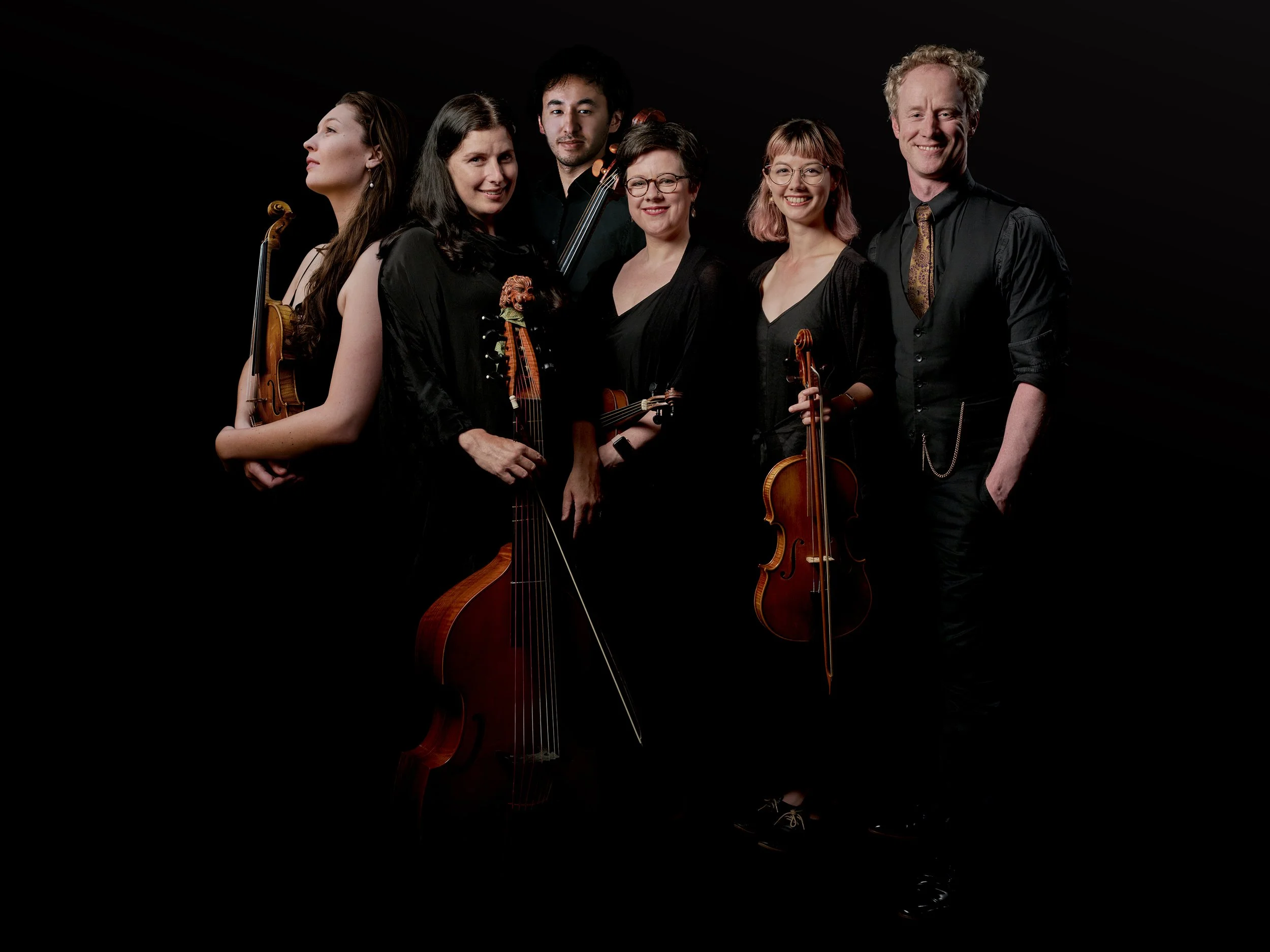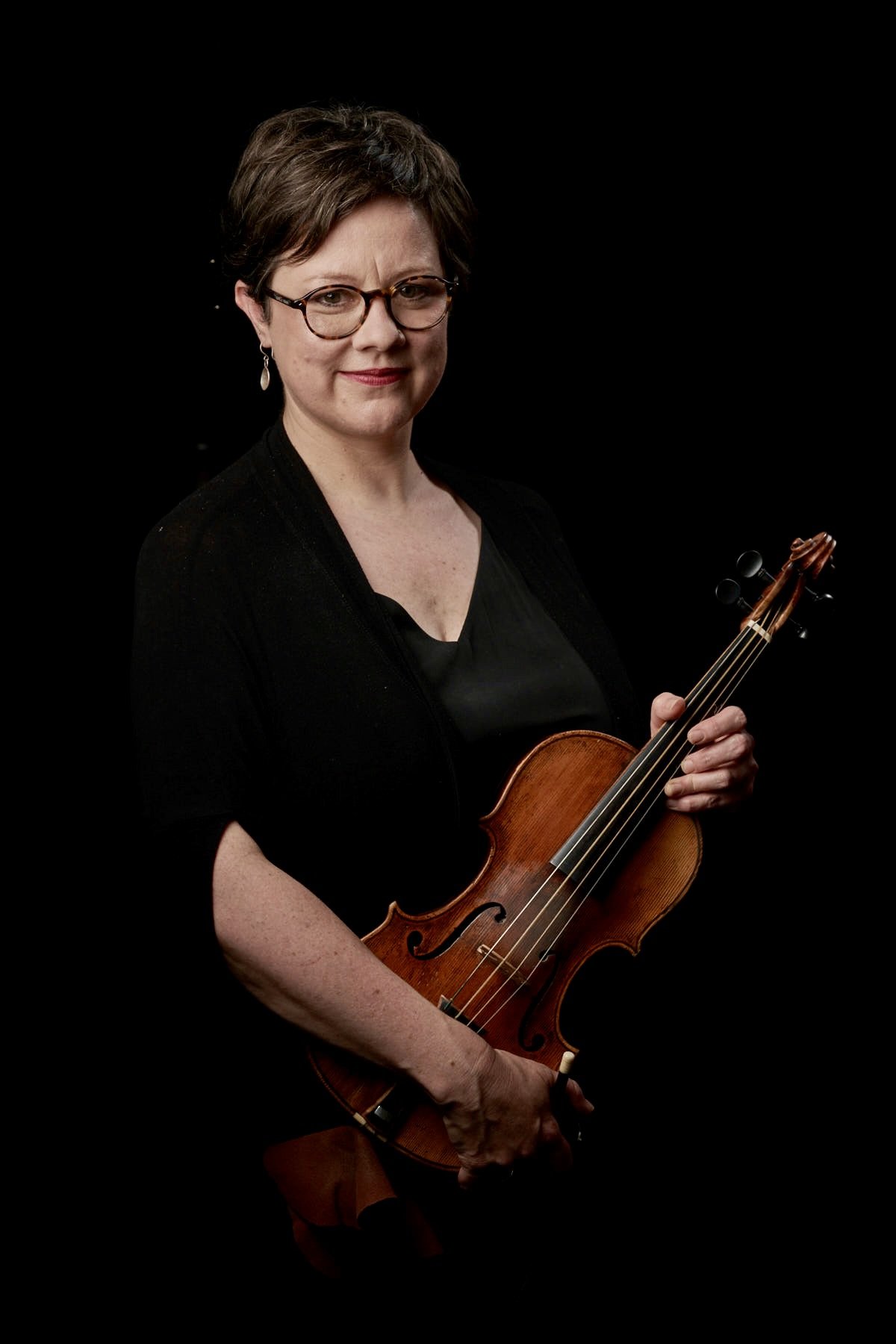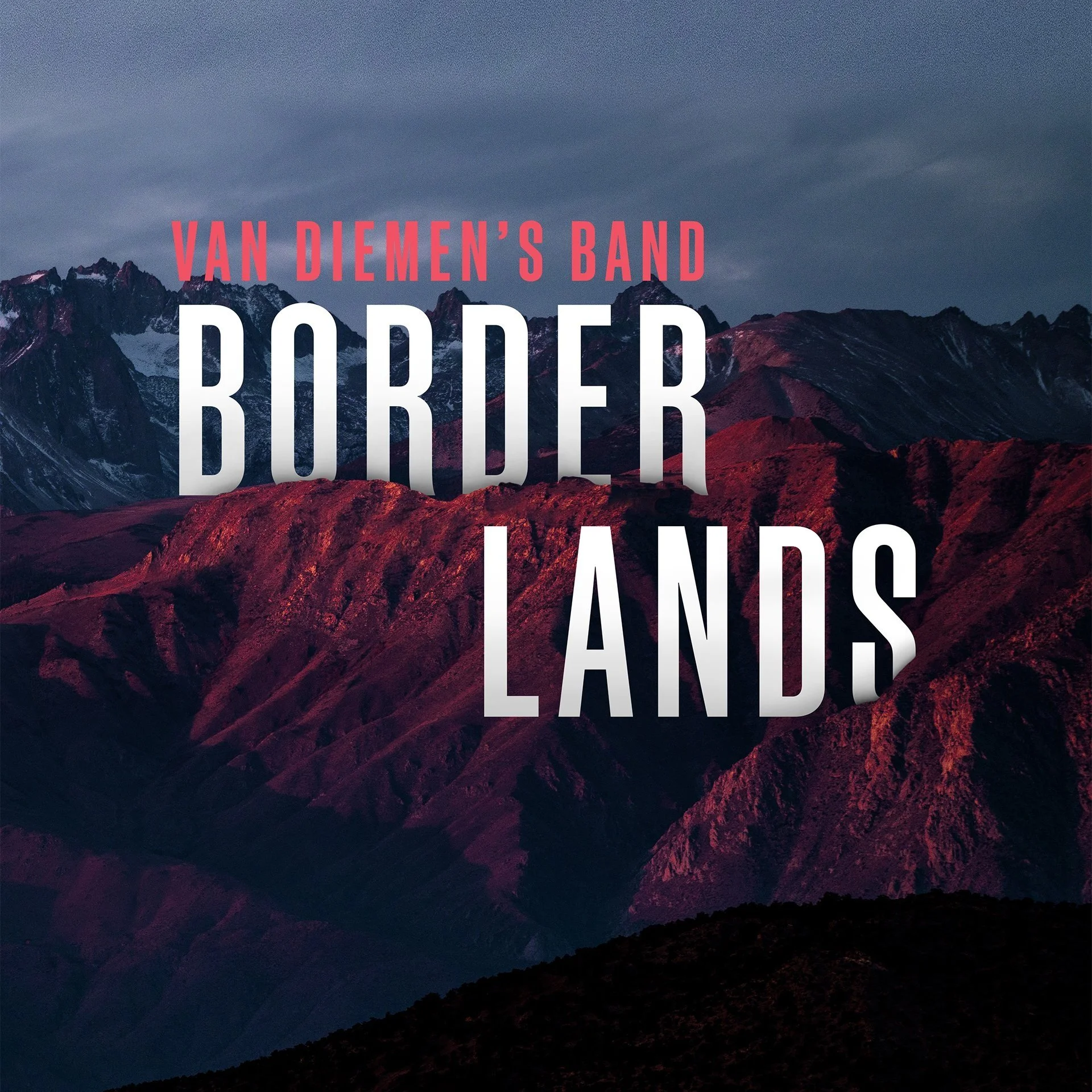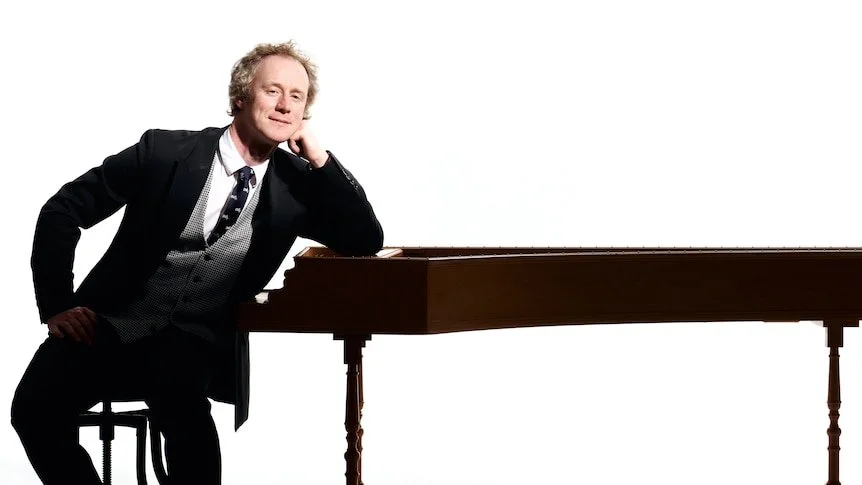Van Diemen’s Band: a baroque ensemble crosses borders
Van Diemen’s Band
(from left)Simone Slattery, violin, recorder, Laura Vaughan, viola da gamba, Anton Baba, viola da gamba, cello, Julia Fredersdorff, artistic director, violin, Katie Yap, viola, Donald Nicolson, harpsichord
Image: Courtesy of Musica Viva Australia
Van Diemen’s Band crossed the Tasman recently with an intriguing programme of two halves for their national concert tour with Chamber Music New Zealand. The six members of the Tasmanian Baroque ensemble, led by violinist Julia Fredersdorff, leapt to the stage with élan in Wellington’s Public Trust Hall, making clear from their first bars that they’re highly accomplished practitioners in the field of historically informed performance.
The musicians opened the programme with a five movement Sonata from 17th century German composer Dietrich Becker, Musikalische Frühlings-Fruchte (Musical Spring-Fruits). The large audience was immediately charmed by their smiling rapport and a jollity suggesting a naughty band in the corner of a European court enjoying in-jokes about the performance.
Called Borderlands, the programme was curated around a theme with increased relevance since conceived last year, its musical and geopolitical connections explored in an excellent essay by Australian writer and broadcaster Christopher Lawrence in the programme book. Many of the composers represented built their careers during the disruptions of the Thirty Years War (1618 – 1648) and would undoubtedly have recognized the anxieties of their 21st century counterparts in this time of border closures and territorial conflict.
Violinist Julia Fredersdorff
Artistic director of Van Diemen’s Band
Toured by the Band around Australia earlier this year, the repertoire also crossed emotional and stylistic borders. Fredersdorff put together what she calls a “fanciful” Borderlands Suite, combining movements by different composers. The strongly rhythmic Battaglia by Samuel Scheidt, originally written for brass, showed the versatility of violinist Simone Slattery, who deftly switched to recorder part way through. The Suite proceeded with a thoughtful Paduan from Becker’s Musical Spring-Fruits and Les Pleurs, a moving lament for a duet of low strings by Frenchman Jean de Sainte-Colombe. The tempo picked up with Scheidt’s fleet-footed, edgy Courante, quickly followed by the joyous bounce of a dancing Chaconne by German Philipp Heinrich Erlebach.
Sinfonia in C major, an early work by the century-straddling Albinoni, ended the first half of the programme with music that looks forward to the virtuosity of Vivaldi and other Italian composers. These musicians offered splendidly energetic and accomplished playing in the quasi-fugal fast movements, showing off the Venetian composer’s fine contrapuntal talents.
The Band’s repertoire choices were nicely linked to the Borderlands theme in all its guises, but these composers, mostly minor figures overshadowed in music history by more brilliant contemporaries, were occasionally a little dull musically. After the interval, however, the programme curation became more idiosyncratic and also more engaging and entertaining.
The “resident Kiwi” in Van Diemen’s Band is harpsichordist Donald Nicholson, a virtuosic performer whose sparkly Liberace-style jacket matched his mischievous demeanour and the whole Band’s quirky style of presentation. These performers are having fun with each other and the music. In cosmopolitan Georg Muffat’s five movement Sonata, from his Armonico Tributo, they played around with the rhythms in the faster dance movements with easy rapport, exchanging smirking grins.
Harpsichordist and composer Donald Nicholson
“…mischievous demeanour.”
Then came an almost astonishing change to the texture of the programme. Genre-crossing Icelandic composer María Huld Markan Sigfusdottir is part of an indie rock band but wrote her Clockworking in 2013 for a trio of Baroque string instruments and electronic tape. She’s exploiting, Fredersdorff explained, “the imperfections of gut strings”. Sustained repetitive gestures conjure the mechanical inner workings of a clock, the ghostly electronic tape building, as the piece does, to take a foreground position. Once over the surprise of the abrupt move from the Baroque, it was a highly effective programming choice that drew the audience in as it grew in power.
The unpublished Sonata Jucunda which followed is attributed to that Baroque trickster Heinrich Ignaz Franz von Biber. The score is full of Biberisms, his usual virtuosic demands and odd harmonic shifts, but also crazy effects like animal imitations and extravagant harpsichord flourishes, all played with a fine sense of stylistic send-up and exaggeration as the wild frenzy increased.
Spirals, the newest work on the programme, was composed for this tour by Nicholson himself. Relating the Borderlands theme to contemporary issues of security and conflict, his atmospheric work has a continuously flowing passacaglia bass-line rotating without resolution, perhaps symbolising the circularity of human experience. A plaintive little Orthodox melody makes reference to the current war in Ukraine, which, when played by recorder over strummed strings, became a very poignant moment in a highly effective and moving composition.
A short encore by Biber, the Nightwatchman’s Serenade, had the strings imitating lutes and Nicholson producing mock-mystery tinklings with the tuning key of the harpsichord. It was a charming and light-hearted conclusion to an intriguing programme devised and played with skill, musical understanding and engaging humour.
Borderlands by the Van Diemen’s Band, touring for Chamber Music New Zealand 2-15 September, 2022. Upcoming concerts: Hamilton 12 September, Auckland 13 September, Napier 15 September. Tickets and more information here.




